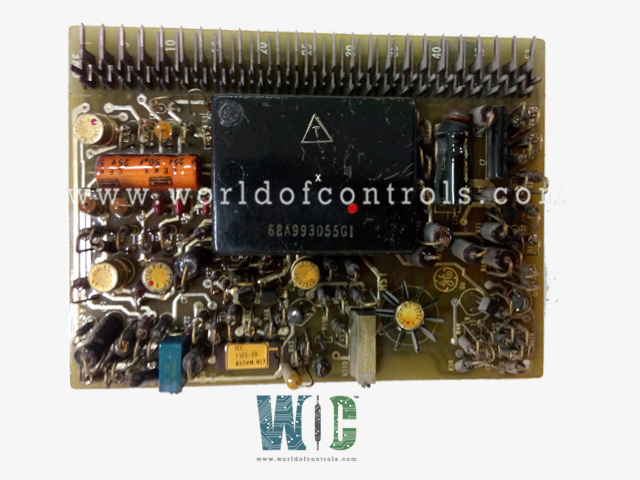
World Of Controls understands the criticality of your requirement and works towards reducing the lead time as much as possible.
IC3600SVZB1 - 12 - Voltage Regulator Card is available in stock which ships the same day.
IC3600SVZB1 - 12 - Voltage Regulator Card comes in UNUSED as well as REBUILT condition.
To avail our best deals for IC3600SVZB1 - 12 - Voltage Regulator Card, contact us and we will get back to you within 24 hours.
SPECIFICATIONS:
Part No: IC3600SVZB1
Manufacturer: General Electric
Product Type: 12 - Voltage Regulator Card
Series: Mark II
Input Voltage Range:: 15V to 30V
Output Voltage: 12V DC
Input Signals: 0-24V
Power Supply Voltage: 24 V dc
Output Current: 1A to 5A
Ripple and Noise: 50mV
Operating temperature: -40�C to 85�C
Board Size: 2.8 cm high x 8.6 cm
Weight: 0.45 kg
Availability: In Stock
Country of Origin: USA
FUNCTIONAL DESCRIPTION:
IC3600SVZB1 is a 12 - Voltage Regulator Card manufactured and designed by General Electric as part of the Mark II Series used in GE Speedtronic Control Systems. These systems depend on various electronic modules, such as sensors, actuators, and control circuits, all of which require a consistent 12V supply to function accurately. Voltage fluctuations can lead to signal interference or malfunctions, potentially causing incorrect readings or performance issues. By regulating the voltage, the 12-volt regulator card protects these sensitive electronics from power disturbances and helps maintain the integrity of feedback loops that control turbine speed, load adjustments, and emergency shutdowns. This stability is critical for ensuring precise control, safety, and efficiency in turbine operations.
FUNCTIONS:
WOC has the largest stock of OEM replacement parts for GE Speedtronic Gas Turbine Control Systems. We can also repair your faulty boards and supply unused and rebuilt boards backed up with a warranty. Our team of experts is available round the clock to support your OEM needs. Our team of experts at WOC is happy to assist you with any of your automation requirements. For pricing and availability on parts and repairs, kindly contact our team by phone or email.
What types of input voltages can the Voltage Regulator Card handle?
The input voltage range varies by design, but typically, a Voltage Regulator Card can accept input voltages higher than 12V (e.g., 15-24V) to maintain a stable 12V output.
What happens if the input voltage falls below 12V?
If the input voltage is lower than the required output voltage (12V), the card may fail to maintain the proper voltage, and the output will be less than 12V, potentially affecting device performance.
Can a Voltage Regulator Card be used for both AC and DC inputs?
Most Volt Regulator Cards are designed for DC inputs. If using an AC input, an additional rectifier is required to convert AC to DC before regulation.